If there is anything that I have learned in more than a decade of coaching experience, it is that every athlete is unique, and what works for one athlete might not work for another. This is a hard lesson to learn, one that some athletes and coaches never learn.
What works for the pros might not work for you. It may seem obvious — professional cyclists have nothing else to do other than eat, sleep, and recover — but it is even more nuanced than that. Similar riders at the top level of the sport can have vastly different training methods. Some riders prefer to race as much as possible, while others would rather train on a mountain for three months.
In preparing for the Tour de France, we can see quite the contrast in preparation, especially when it comes to sprinters versus climbers. We will look at 10 different riders in this article, examining where they are and why, in preparation for the Tour de France.
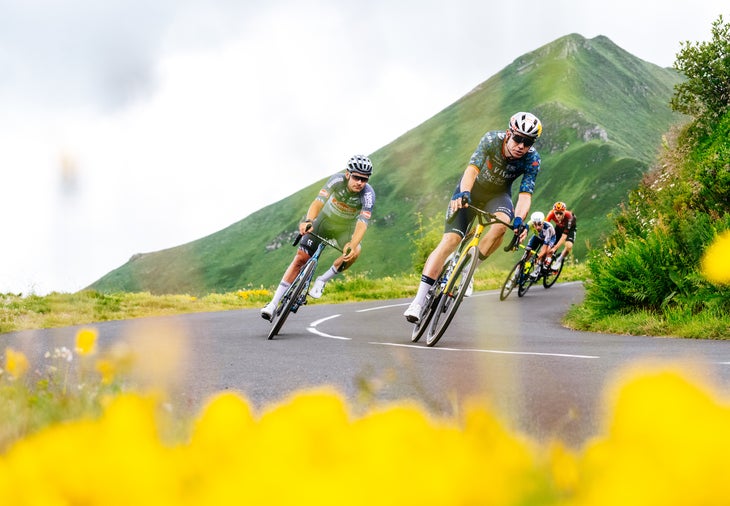
Where are the Sprinters?
In the lead up to the Tour de France, most of the race’s top sprinters are racing. Tim Merlier and Biniam Girmay did one-days in Belgium, while Jonathan Milan and Pascal Ackermann took on the Critérium du Dauphiné. One exception seems to be Kaden Groves, who took a break from racing after the Giro d’Italia. None of the other sprinters rode this year’s Giro, so they used June as their final tune-up for the Tour.
Where are the Climbers?
The big three — Tadej Pogačar, Jonas Vingegaard, Remco Evenepoel — all lined up for this year’s Dauphiné. In fact, most of the peloton at the Dauphiné will race in the Tour de France. The Dauphiné is the unofficial TdF preparation race, utilizing similar routes and climbs as will be featured in the Tour. Thus, the timing of the Dauphiné is meant to be the perfect slot in preparation for the Tour — it is neither too early nor too late, finishing 20 days before stage 1 of the Tour.
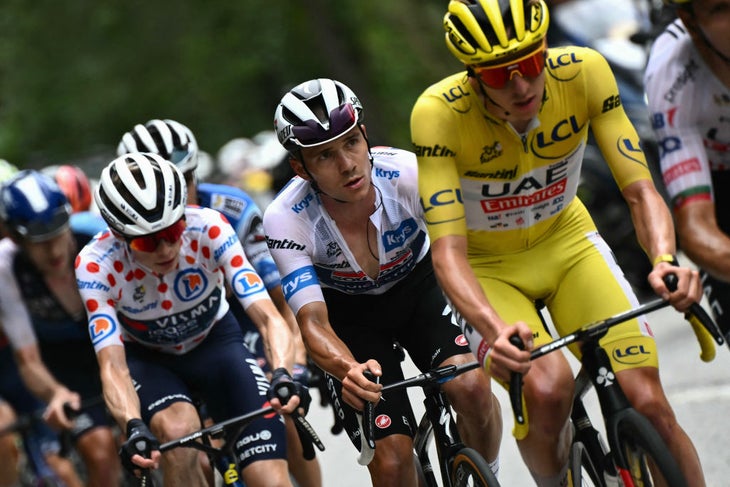
The other TdF preparation race is the Tour de Suisse, a race that ends just 13 days before the Tour. It is a much tighter timeline, but it works for some riders. Ben O’Connor, João Almeida, and Felix Gall are three of the biggest names on the startlist, and you might wonder how this will affect their TdF prep. I imagine that O’Connor and Gall chose this race out of preference, while Almeida may be there in a leadership role because Pogačar already had the Dauphiné.
With two to three weeks before these final prep races and the start of the Tour, most climbers will head to high-altitude after finishing their race. Will the sprinters be there, too?
Altitude Training – Sprinters vs. Climbers
Altitude training offers a host of benefits, including boosting red blood cell count and aerobic efficiency. When done correctly, cyclists will produce their best numbers in the few weeks following an altitude camp.
Every climber and GC rider trains at high altitude before the Tour de France (if anyone knows of someone who doesn’t, let me know). In fact, some of them have already been to two to three altitude camps this season by the time they start the Tour. In addition to the physiological benefits, altitude training offers a consistent training environment that is ideal for TdF preparation.
Riders can train on long climbs every single day, and there is little distraction in these high-altitude mountain towns. Most teams send their staff — chefs, nutritionists, physiotherapists, coaches, mechanics, etc. — to these pre-Tour camps, creating an ideal training environment for the riders.
Team UAE Emirates-XRG and Visma-Lease a Bike are meticulous about their pre-Tour altitude camps. Each team targets a specific number of days at altitude before the Dauphiné, and then again before the Tour. Despite sharing the same goal, their approaches to altitude training are slightly different. Here is a look at the exact number of days that Pavel Sivakov and Matteo Jorgenson spent at altitude before last year’s Tour, which started on June 29, 2024. While the differences might seem small, they can add up big time after three weeks of racing at the Tour.
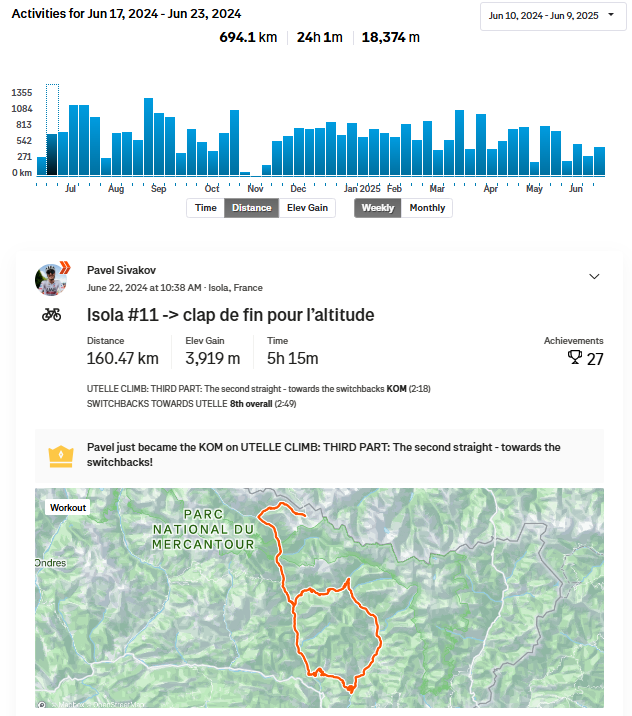
Sivakov
- Trained at altitude June 11-22 (12 days of training)
- Slept at 2,000 meters
- Returned to sea level just six days before the Tour
Jorgenson
- Trained at altitude June 10-20 (11 days of training)
- Slept at 2,100 meters
- Returned to sea level eight days before the Tour
How Sprinters Train for the Tour de France
Few sprinters head to high-altitude before the Tour de France. Instead, they seem to focus on racing in the lead-up to the Tour. While the climbers are preparing to battle in the mountains, the sprinters are preparing to get their elbows out at sea level.
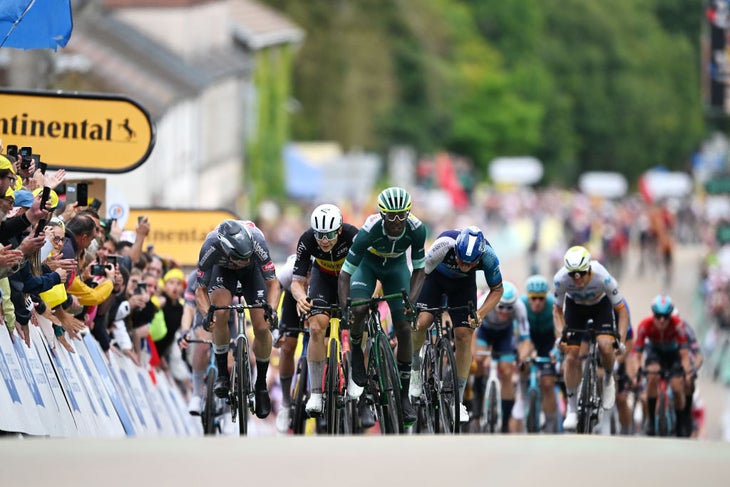
Sprinting has to do with peak power output, positioning, timing, bike handling skills, and team synergy. These factors are not correlated with altitude training — in fact, it is often better to improve these skills through racing. There is only so much sprint intensity that you can simulate at a team camp. Sometimes you just need to go and get your elbows out in the rain in Belgium.
In the lead-up to the Tour, sprinters aren’t actually training much in between their tune-up races. Instead, they keep themselves fresh for the first few stages of the Tour which are likely to end in bunch sprints. While the climbers and GC riders might target the second and third weeks of the Tour, the sprinters need to be in their best shape for stage 1.
How Climbers Train for the Tour de France
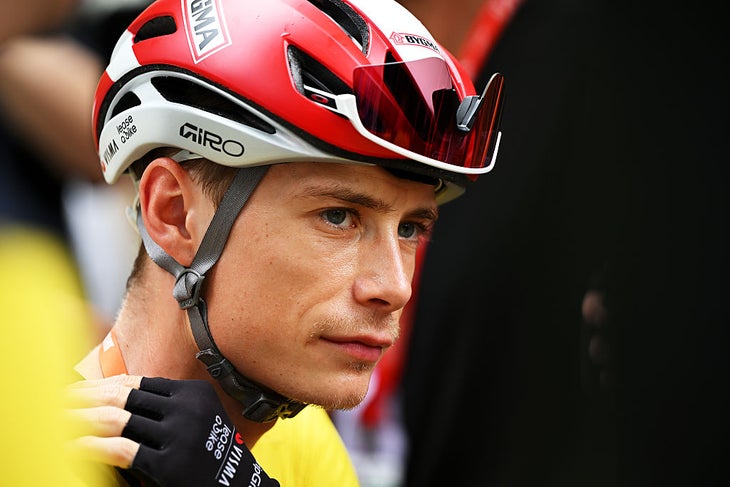
In the last few months before the Tour, climbers and GC riders can have intense training programs. While each rider might have a slightly different plan, they are all focused on consistent volume, as well as increasing their VO2 Max and threshold.
The Tour de France GC typically comes down to a series of 20-60 minute power tests. Of course, there is chaos and the occasional team attack; but for the most part, the strongest rider over a three-week series of threshold tests will win the Tour.
In these final few weeks at altitude, most climbers and GC riders are riding 4-6 hours a day in 2-3 blocks. Their sessions can include VO2 Max intervals, threshold intervals, sprints, and more. Other times, they simply ride in Zone 2.
Let’s take a look at Jorgenson’s final altitude block before the 2024 Tour de France.
- Day 1 – 1hr 20min Zone 1
- Day 2 – 1hr 20min Zone 1
- Day 3 – 2hrs low endurance
- Day 4 – 2.5hrs low endurance
- Day 5 – 4hrs with 2, 3, and 4 min VO2 Max intervals + strength training in the evening
- Day 6 – 4.5hrs with 25 min Tempo and 4 min VO2 Max intervals
- Day 7 – 6hrs low endurance
- Day 8 – 1hr Zone 1
- Day 9 – 4hrs with 2 min and 4 min VO2 Max intervals + strength training in the evening
- Day 10 – 5hrs with 2-8 min intense efforts on the TT bike
- Day 11 – 6hrs low endurance
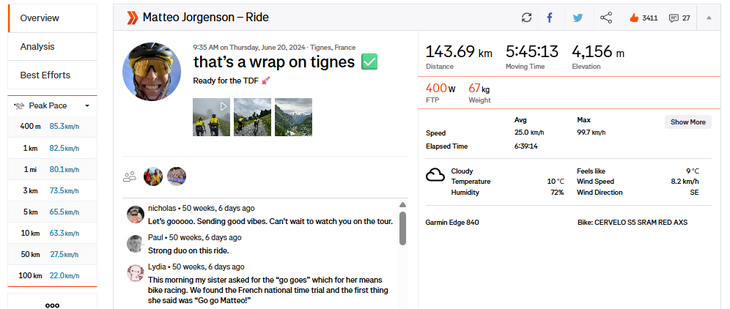
Conclusion
Every rider in the Tour de France has spent thousands of hours in training. They have lived on top of a mountain, grit their teeth in Belgium, and done time trial intervals at 2,200 meters. But in the final few weeks before the Tour, these riders could be thousands of miles apart.
While the sprinters dial in their leadouts, the climbers are staying quiet on a mountain in Tenerife. Some riders are racing two weeks before the Tour, while others are taking a rest day in Monaco. Each rider has a unique approach to the Tour, and it’s fascinating to see just how different they are.
As professional cycling continues to evolve, we will keep a close eye on the riders’ final preparations before the Tour. Who knows — maybe there is a new, untapped method that could be the next big thing. Has anyone ever tried coming down from high altitude just one day before the start of the Tour?
I don’t think so. But you never know until you try.
Power Analysis data courtesy of Strava
Strava sauce extension
Riders:
